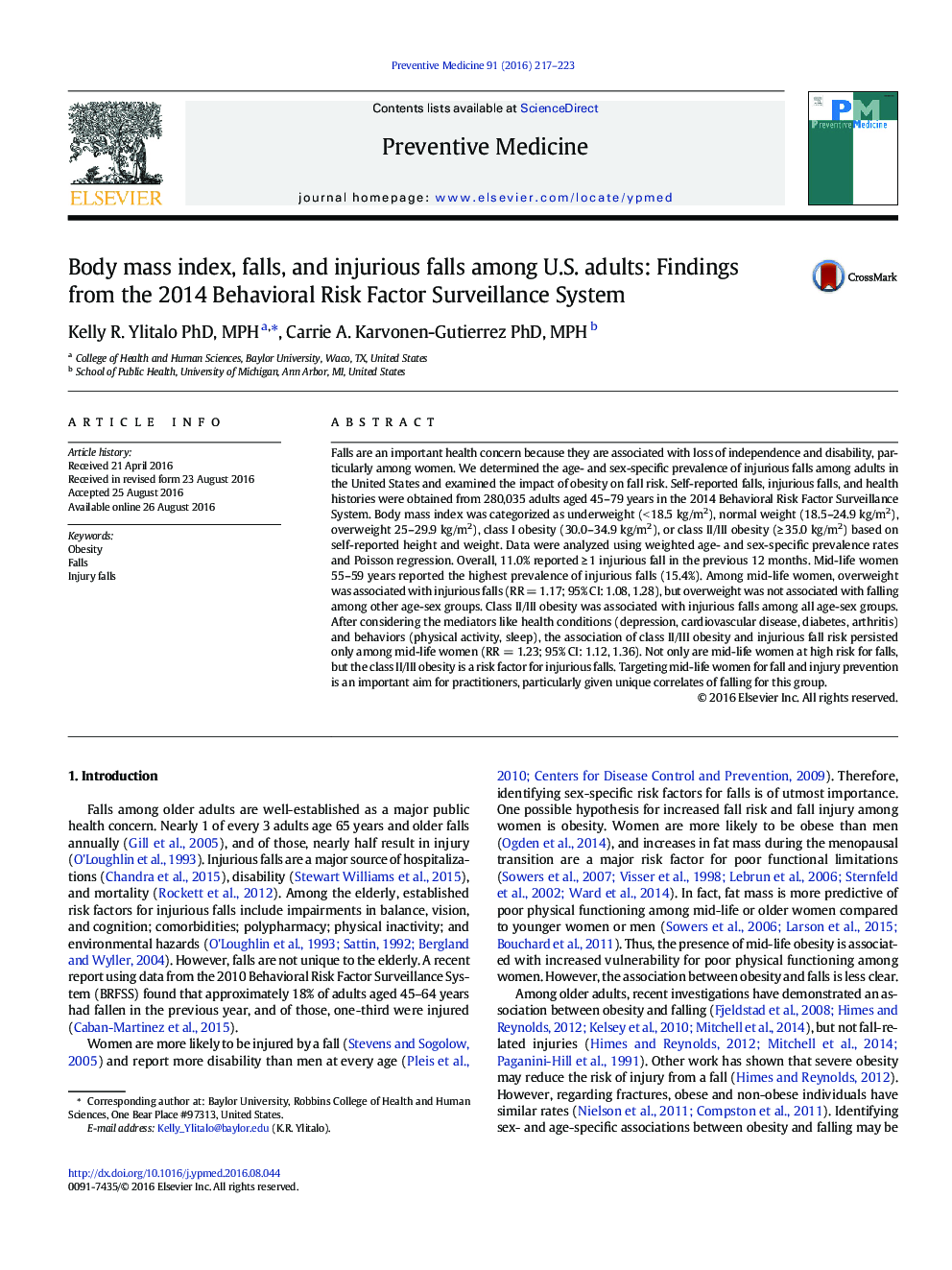| کد مقاله | کد نشریه | سال انتشار | مقاله انگلیسی | نسخه تمام متن |
|---|---|---|---|---|
| 6045961 | 1581623 | 2016 | 7 صفحه PDF | دانلود رایگان |
- The prevalence of falls and injurious falls differs by age and sex.
- Mid-life women were at highest risk for falls and injurious falls.
- BMI may identify mid-life women at high risk for falls.
Falls are an important health concern because they are associated with loss of independence and disability, particularly among women. We determined the age- and sex-specific prevalence of injurious falls among adults in the United States and examined the impact of obesity on fall risk. Self-reported falls, injurious falls, and health histories were obtained from 280,035 adults aged 45-79 years in the 2014 Behavioral Risk Factor Surveillance System. Body mass index was categorized as underweight (< 18.5 kg/m2), normal weight (18.5-24.9 kg/m2), overweight 25-29.9 kg/m2), class I obesity (30.0-34.9 kg/m2), or class II/III obesity (â¥Â 35.0 kg/m2) based on self-reported height and weight. Data were analyzed using weighted age- and sex-specific prevalence rates and Poisson regression. Overall, 11.0% reported â¥Â 1 injurious fall in the previous 12 months. Mid-life women 55-59 years reported the highest prevalence of injurious falls (15.4%). Among mid-life women, overweight was associated with injurious falls (RR = 1.17; 95% CI: 1.08, 1.28), but overweight was not associated with falling among other age-sex groups. Class II/III obesity was associated with injurious falls among all age-sex groups. After considering the mediators like health conditions (depression, cardiovascular disease, diabetes, arthritis) and behaviors (physical activity, sleep), the association of class II/III obesity and injurious fall risk persisted only among mid-life women (RR = 1.23; 95% CI: 1.12, 1.36). Not only are mid-life women at high risk for falls, but the class II/III obesity is a risk factor for injurious falls. Targeting mid-life women for fall and injury prevention is an important aim for practitioners, particularly given unique correlates of falling for this group.
Journal: Preventive Medicine - Volume 91, October 2016, Pages 217-223
